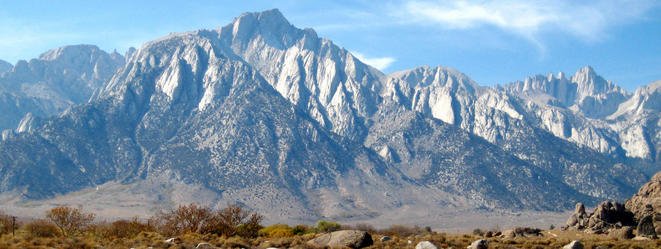 Princeton University Freshman Seminar FRS149 & FRS145 (2007-2009)Earth's Changing Surface & Climate (in California)See also: Earth's Environments & Ancient Civilizations — in Cyprus (2011-2013) State of the Earth: Shifts and Cycles — in Spain (2015-2017) Earth: Crops, Culture & Climate — in Italy (2019-2022) Rise and Fall: Geodesy, and the History of Roman Floods (2024-2026) The surface of Earth today, an amalgamation of mountain ranges, basins, and the hydrosphere, records an integrated history of processes that act on a range of time scales spanning seventeen orders of magnitude. The central question treated in this Freshman Seminar is: How does Earth's surface evolve in response to internal (e.g., tectonic and magmatic), surficial (e.g., weather, climate, and anthropogenic effects), and external (e.g., extraterrestrial) forcing? You will gain practical experience making geological and geophysical observations, and in particular, focusing on quantitative analysis of observables such as topography, gravity, and weather. The classroom component is complimented by a mandatory week-long field trip to the western United States. During this trip, you will develop research projects that involve geological and geophysical mapping of the interplay between recent volcanic explosion craters, changing climate, and anthropogenic demands on water resources in the Mono Lake region. This seminar is not a comprehensive introduction to the geological sciences, but rather a look at a select few processes of import to understand changes to the Earth's surface in space and time. While certain fundamental principles of geology are explained in class and through reading assignments, the emphasis is on how you can be a natural scientist with a background of nothing but high school math and physics, a keen observational sense, a knack for spatial and quantitative analysis, and a careful and precise way with words. Department of Geosciences Professors Adam Maloof and Frederik Simons developed this course together with Prof. em. Bob Phinney, a veteran of the Freshman Seminar program. Student FeedbackSome Student Work
Dune Morphology and Wind Regime in Death Valley
 Non-climatic and Climatic Effects on Tree Ring Width in Tioga Pass  A Relative History of Late Quaternary Activity at Fish Springs Cinder Cone Eruption Dynamics of the Inyo Crater System  Tree Core and Climatologic Analysis of the CO2 Event in 1989 at Horseshoe Lake  Frederik Simons Last modified: Wed Mar 20 22:17:16 EDT 2024 |